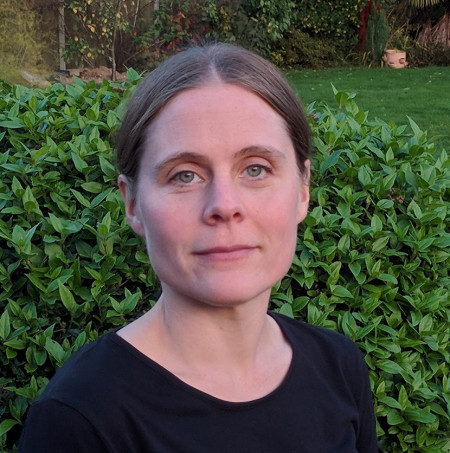
Dr Katrine Rogers
Senior Lecturer And Staff Tutor In Mathematics And Statistics
School of Mathematics & Statistics
Biography
Professional biography
I am a senior lecturer/regional academic (staff tutor) in the Applied Mathematics group in the School of Mathematics and Statistics, where I contribute to teaching as part of module teams, carry out research and support associate lecturers.
I was at the University of Southampton before joining the OU, where I specialised in mathematical modelling and numerical simulations, first as a PhD student in Physics and Astronomy, and then as a postdoctoral researcher at the Institute for Sound and Vibration Research (ISVR). This followed on from my MMath at the University of Bath.
Research interests
My primary research interest is in optimising superoscillatory functions, which have wide and groundbreaking applications. Superoscillation is the phenomenon where a bandlimited function oscillates faster than its fastest Fourier component. An example of its application is in taking images using optical instruments: it was previously thought that the resolution we can achieve in such images was fundamentally limited, but with superoscillations there is, in principle, no limit to the achievable resolution. This opens up the possibility of taking much more detailed images of the microscopic world, for example of details within human cells.
My previous research has included mathematical modelling of a range of applications, from modelling wave propagation in structural engineering to modelling electron and photon interactions in the vicinity of black holes. A recurring theme is novel approaches to numerical simulations and optimisation, including work on genetic algorithms, semi-analytic techniques and finite element methods.
Projects
Mathematical modelling of the electric potential from cochlear implants for a new diagnosis tool
Up to half of adults with a cochlear implant experience poor hearing at some time with their implant. While recognised globally as a major problem, there is little effective differential diagnoses of these poor clinical outcomes. Our vision is to produce a diagnostic test that works in a routine clinic, is non-invasive and well tolerated by patients. To develop this new transformative tool and realise the promise of our recent innovative study we need a mathematical model which predicts the electric potential on the scalp caused by an electric current source in the cochlea. This application brings mathematical expertise into an existing cross-disciplinary, translational team. We will implement a human head geometry, including the cochlea, and use the finite element method to build and solve a new mathematical model to predict the electric potential on the scalp caused by a current source in the cochlea. The model will be validated against clinical data collected from patients with cochlear implants at the University of Southampton Auditory Implant Service (USAIS). We will adjust the complexity of the model, using sensitivity analysis to electrical and geometrical parameters, while iteratively comparing the model output to existing data to produce a validated model which applies across individuals. We will use the outcomes of this project to improve the quality of life for people who hear with cochlear implants through clinical studies using NIHR/industry funding and further fundamental UKRI funded research.
Publications
Journal Article
Encouraging student participation in mathematical activities in synchronous online tuition (2024)
Realising superoscillations: A review of mathematical tools and their application (2020)
Far-field Unlabelled Super-Resolution Imaging with Superoscillatory Illumination (2020)
Far-Field Superoscillatory Metamaterial Superlens (2019)
Optimising superoscillatory spots for far-field super-resolution imaging (2018)